Second-hand Magic, Part II
 Last week, I wrote here about the Avram Davidson–edited 1983 anthology Magic For Sale. I looked at the book’s fifteen stories, and tried to think about the nature of tales about magic stores. I thought I saw a few patterns. And then my girlfriend pointed out that she owned another anthology about magic stores: 2004’s The Magic Shop, edited by Denise Little. Having now read that book, I think it makes for an interesting contrast with Davidson’s collection.
Last week, I wrote here about the Avram Davidson–edited 1983 anthology Magic For Sale. I looked at the book’s fifteen stories, and tried to think about the nature of tales about magic stores. I thought I saw a few patterns. And then my girlfriend pointed out that she owned another anthology about magic stores: 2004’s The Magic Shop, edited by Denise Little. Having now read that book, I think it makes for an interesting contrast with Davidson’s collection.
The two anthologies have some very obvious differences. Davidson’s was published in 1983 and drew on stories from across 85 years, meaning he could select from a murderer’s row of classic sf and fantasy writers: Sturgeon, Leiber, Ellison, Yolen, Bester, Wells, Davidson himself, and many others. Little’s collection was published in 2004, and the stories were all written for that book. And you can’t help but notice that while Magic For Sale had only one woman contributor (and one female lead), 11 out of 15 writers in The Magic Shop are women.
I didn’t think there was much to choose from between the two books, on the whole, though I thought more of the humour in The Magic Shop worked. But for the moment I’m less interested in quality and more in characteristics. How did things change over time? Or did they? I thought some things are very different from book to book, some much the same, and — this was the surprising bit to me — some things only became obvious to me when I read the two books together.
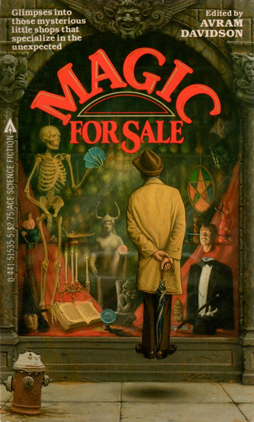 Let’s look at the fifteen stories of The Magic Shop. A terminological note: here and throughout this post, I’m going to use the phrase “occult shop” (or store) to refer to a store that sells goods having to do with non-fantastic esoterica — that is, to do with New Age beliefs, with Wicca, with ceremonial magic, and so forth. There is some crossover in these stories between that kind of shop and the Davidsonian second-hand shop filled with magical odds and ends — occult stores may also be magical — but the distinction seems to me to be useful. So the first story, Susan Sizemore’s “Every Little Thing,” follows a wizard and paladin who runs a magic store as he helps out a female client who happens to live in a cursed house. It’s mostly about the romance that grows between the two, and the client’s ability to work her own magic on the wizard’s shop, bringing it up to date and making it profitable. From a certain point of view, then, it’s a story about a traditional magic shop becoming a more open and welcoming place, without the aura of strangeness.
Let’s look at the fifteen stories of The Magic Shop. A terminological note: here and throughout this post, I’m going to use the phrase “occult shop” (or store) to refer to a store that sells goods having to do with non-fantastic esoterica — that is, to do with New Age beliefs, with Wicca, with ceremonial magic, and so forth. There is some crossover in these stories between that kind of shop and the Davidsonian second-hand shop filled with magical odds and ends — occult stores may also be magical — but the distinction seems to me to be useful. So the first story, Susan Sizemore’s “Every Little Thing,” follows a wizard and paladin who runs a magic store as he helps out a female client who happens to live in a cursed house. It’s mostly about the romance that grows between the two, and the client’s ability to work her own magic on the wizard’s shop, bringing it up to date and making it profitable. From a certain point of view, then, it’s a story about a traditional magic shop becoming a more open and welcoming place, without the aura of strangeness.
P.N. Elrod’s “Tarnished Linings” follows a woman who works at an occult store who is harrassed and stalked by a customer, but is helped out by the magic used by two other customers, who in so doing bring more upon themselves than they expected. “For Whom the Bell Tolled,” by Jody Lynn Nye, follows the owner of a struggling “magical curio shop” who acquires a bell that may give him his heart’s desire, with all the problems that entails. India Edghill’s “Winter Phoenix” is one of the highlights of the book, imagining an Anastasia Romanova who happened to stop by a magic shop when young, helping her to an unexpected future. (In 2004 it was least theoretically possible Anastasia had survived the Russian Revolution; in 2007 DNA tests confirmed she was murdered in 1918.)
Laura Resnick’s “The Magic Keyboard” is a genuinely funny story about a skeptical but blocked writer who tries to buy some writing help from a shop that may or may not be more than it seems. “Off Key,” by ElizaBeth Gilligan, follows a businesswoman whose free-spirited twin drags her to a magic shop, and what happens as a result. Michelle West’s “Dime Store Rings” may be the best story in either anthology, an impressive character piece about the daughter of Japanese immigrants to Toronto, her relationship to her parents, and the role of (seemingly) junk jewellery from an old-fashioned dime store therein. Bradley H. Sinor’s “Grails” is a more straightforward urban fantasy with noir touches about a guy who gets dragged into the affairs of a magic store and monstrous bookies. “Mightier Than The Sword?” by Josepha Sherman is another story about a writer, this time one who finds a secret about the place where she lives, and a store where she finds a writing implement that may or may not be the magic she needs.
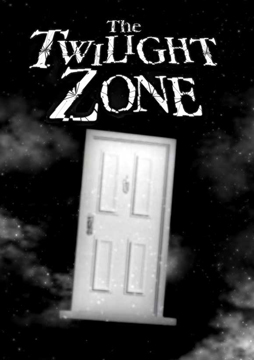 Bill McCay’s “The Curse of the Itch” follows the discovery of a powerful magic item left in the wake of a magic shop’s closing — the wizard who runs the store having been a bad businessmen, as amusingly shown by his putting his money into a comics store in the mid-90s. “The Assassin’s Dagger,” by Kristine Kathryn Rusch, follows a kind of corporate trouble-shooter for a chain of magic stores as she tries to set matters to right at a shop in France. Mel Odom’s “The Serpent of the Lakes” follows an Algonquin warrior who must recover his true love from a magical snake-creature who lives in what is now called Lake Erie. Presumably set sometime in the sixteenth or seventeenth century — the Erie people, scattered by the Iroquois in the late seventeenth century, are the hero’s enemies, and Europeans are mentioned but not seen — the story stretches the idea of the “magic shop” to the breaking point, the shop in this case being the house of a magical entity who gives the hero items to help him on his quest.
Bill McCay’s “The Curse of the Itch” follows the discovery of a powerful magic item left in the wake of a magic shop’s closing — the wizard who runs the store having been a bad businessmen, as amusingly shown by his putting his money into a comics store in the mid-90s. “The Assassin’s Dagger,” by Kristine Kathryn Rusch, follows a kind of corporate trouble-shooter for a chain of magic stores as she tries to set matters to right at a shop in France. Mel Odom’s “The Serpent of the Lakes” follows an Algonquin warrior who must recover his true love from a magical snake-creature who lives in what is now called Lake Erie. Presumably set sometime in the sixteenth or seventeenth century — the Erie people, scattered by the Iroquois in the late seventeenth century, are the hero’s enemies, and Europeans are mentioned but not seen — the story stretches the idea of the “magic shop” to the breaking point, the shop in this case being the house of a magical entity who gives the hero items to help him on his quest.
I did say last time that Davidson’s magic-shop anthology reminded me of The Twilight Zone, so it’s oddly gratifying to see that Gary A. Braunbeck’s “The Hand Which Graces” is actually dedicated to Rod Serling. It’s a bar story, revolving around an incredible-yet-undeniable tale related to the barkeeper by his friend, a down-at-heels stage magician. In true Serling fashion, it climaxes with a monologue both humanistic and romantic, and has a bittersweet yet hopeful ending. Von Jocks’ “The Fairest” follows a working woman who has a series of strange experiences with a mirror in an occult store. And Rosemary Edghill’s “A Winter’s Tale” is a story-inside-a-story, a tale told by one employee of an occult shop to another when something strange turns up during a check of the store’s inventory.
Fifteen stories, to compare with the fifteen stories of Magic For Sale. What’s changed? A number of things, but I want to start with the distinction I suggested above, between magic and occult shops. Davidson introduced his book by talking about second-hand shops, and the aura of strange hole-in-the-wall stores. There are a few places like that in The Magic Shop, but for the most part the shops here are different things, much more modern and handling newer stock. Occult stores are a recurring image, some of which sell working magic and some of which don’t; but then magic shops more broadly, as with Nye’s curio store, are also more everyday things in many of these stories. Magic here has a different feel, then, one less connected with antiquity and strangeness.
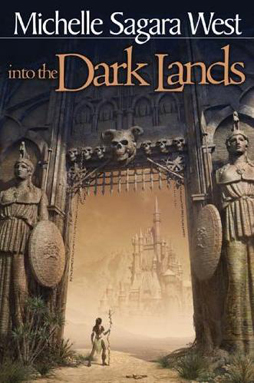 That’s part of a different tone that emerges from the 2004 anthology overall. I said last time that although the stories in Magic For Sale came from across a span of several decades, there was a common feel reminiscent of The Twilight Zone, and specifically a sense of a mid-twentieth-century setting; a lot of struggling middle-class white guys being screwed over by strange things. The period sense in The Magic Shop is very different, and, only ten years in the past as I write, already quite distinct: characters use the internet, but have to wait for connections and don’t turn to it as their first research option. Social media is nonexistent. Interestingly, although most of the writers are American, I didn’t notice much of a direct or indirect reaction to 9/11 or the Iraq war; from where I sit in Canada it seems as though American culture’s become extremely militaristic over the past ten years — the military both more present and usually more valorised — but there’s none of that here, little mention of the military at all.
That’s part of a different tone that emerges from the 2004 anthology overall. I said last time that although the stories in Magic For Sale came from across a span of several decades, there was a common feel reminiscent of The Twilight Zone, and specifically a sense of a mid-twentieth-century setting; a lot of struggling middle-class white guys being screwed over by strange things. The period sense in The Magic Shop is very different, and, only ten years in the past as I write, already quite distinct: characters use the internet, but have to wait for connections and don’t turn to it as their first research option. Social media is nonexistent. Interestingly, although most of the writers are American, I didn’t notice much of a direct or indirect reaction to 9/11 or the Iraq war; from where I sit in Canada it seems as though American culture’s become extremely militaristic over the past ten years — the military both more present and usually more valorised — but there’s none of that here, little mention of the military at all.
There are many more female leads in The Magic Shop than in Magic For Sale, but more significant to my eye is the fact that there are a lot more shared leads. Leiber’s “Bazaar of the Bizarre” was the only story in Davdison’s anthology that had two allied main characters, while a number of the stories in Little’s collection feature two or more protagonists acting together. That seems to me notable because much of the atmosphere of the stories in Magic For Sale involved a lone figure struggling with the world. Here the lead characters often have allies — or the stories may actually be about two potential allies coming together. Bradbury’s story in Magic For Sale was along those lines, but showed a relationship failing to start; The Magic Shop generally has more optimistic stories, and relationships here are not only more common but more successful.
If the stories are optimistic, they correspondingly have fewer stings at the end. Some of them (I’m thinking of Sizemore’s and Sherman’s, in particular) seem to go on past the point where the dramatic action concludes in order to tie things off with a happy or relatively happy ending. This structurally moves the stories away from the Twilight Zone model; even Braunbeck’s otherwise Serling-esque tale recalls the Serling who used whimsy to approach tragedy, stories in which you start to see where things are going, and hope that you’re wrong while knowing that you’re right. So: there’s no sense of the stories as warnings or parables. Among a preponderance of happy endings, only Elrod’s really seems to function as such.
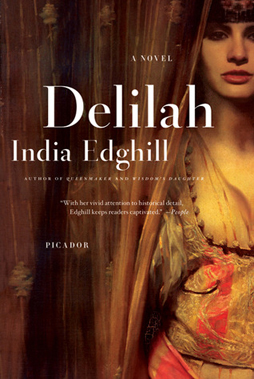 Most of these stories are set in big cities, as in Magic For Sale, but a few are in small towns, while “Winter Phoenix” follows its protagonists across Europe. Most of the stories are set in the then-present day (Mel Odom’s being the only exception), and all of them on Earth. But some seem to be alternate Earths, if only Earths that operate according to urban-fantasy rules, with magic a more-or-less common and unremarked-on feature of life. I said in my last post that magic-shop fantasies are a kind of precursor or sub-genre of urban fantasy, but here I think we can see a difference. Many if not most of the urban fantasies I’ve come across feature a world in which the supernatural is, to some extent, known and accepted in an otherwise unchanged contemporary society. So here some of the stories (Rusch’s, Sizemore’s, to some extent Elrod’s and Edghill’s and McKay’s) show magic shops selling real magic as an accepted part of daily life.
Most of these stories are set in big cities, as in Magic For Sale, but a few are in small towns, while “Winter Phoenix” follows its protagonists across Europe. Most of the stories are set in the then-present day (Mel Odom’s being the only exception), and all of them on Earth. But some seem to be alternate Earths, if only Earths that operate according to urban-fantasy rules, with magic a more-or-less common and unremarked-on feature of life. I said in my last post that magic-shop fantasies are a kind of precursor or sub-genre of urban fantasy, but here I think we can see a difference. Many if not most of the urban fantasies I’ve come across feature a world in which the supernatural is, to some extent, known and accepted in an otherwise unchanged contemporary society. So here some of the stories (Rusch’s, Sizemore’s, to some extent Elrod’s and Edghill’s and McKay’s) show magic shops selling real magic as an accepted part of daily life.
This tends to cut against something I felt was prominent in earlier magic-shop fantasies: the way in which strangeness was conceptualised, the way the strange entered the everyday world. In these modern stories, the strangeness has been normalised. Demons haunt houses and wizards sell charms in a store on a busy street; so what? That’s life. Strangeness doesn’t enter the world through the magic store — in fact a lot of these stories follow a character who owns or works in a magic store, rather than a customer who stumbles into the place.
Partly that may be because in a twenty-first century where occult shops are common, where esoteric goods are readily available, there’s a real blurring of boundaries with the fully magical. Certainly there’s a lot less use of the “Oriental” here as a signifier of strangeness when compared to Magic For Sale; some stories feature occult shops selling Eastern goods, but the sense here is simply of stores that naturally represent the esoteric worldwide and therefore include the East, which is itself neither more nor less strange than the West. In fact, one story starts off looking like it’s about a dark-magic item from an Eastern land, only to reveal that the item was actually produced in the West.
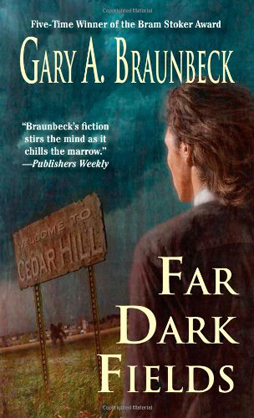 I think, though, that what’s happening is that there’s a different kind of story being told around the symbol of the magic shop. You certainly notice that the ritual of buying and selling is minimised — granted that even in Magic For Sale there was little actual haggling, here items may actually be simply given away to customers. Or, as in McCay’s, found after a store closes. The important thing, narratively, is to get the magic into the character’s hands. Odom’s story doesn’t even have a shop as such. The image of Faust seems to have been exorcised: nobody’s giving up too much to get too little, and there isn’t even really the prospect of such an exchange looming. And there are fewer stories about living stock, about the buying and selling of things or creatures in bondage — Rusch’s character mentions in passing that her corporate chain sells some magical entities, adding a note of darkness to the story, but that sticks out as an exception.
I think, though, that what’s happening is that there’s a different kind of story being told around the symbol of the magic shop. You certainly notice that the ritual of buying and selling is minimised — granted that even in Magic For Sale there was little actual haggling, here items may actually be simply given away to customers. Or, as in McCay’s, found after a store closes. The important thing, narratively, is to get the magic into the character’s hands. Odom’s story doesn’t even have a shop as such. The image of Faust seems to have been exorcised: nobody’s giving up too much to get too little, and there isn’t even really the prospect of such an exchange looming. And there are fewer stories about living stock, about the buying and selling of things or creatures in bondage — Rusch’s character mentions in passing that her corporate chain sells some magical entities, adding a note of darkness to the story, but that sticks out as an exception.
Mainly, these are stories about the opposite: about people finding liberation, in one way or another. These are stories about protagonists becoming aware of their own strength and potential. Strange things happen, but as ways to break out of routine. Broadly speaking, the protagonists don’t find strangeness entering the world, but find out that the world is and always has been strange. Systems have been imagined and enacted to deal with the strangeness, to harness it, but the strangeness is still there, and the individual can choose between the systems that ring the strangeness round. You can stay at your corporate job, and be better at it, as in Gilligan’s story; or you can leave your regular job, convinced that you’ll find something better, as in Jocks’.
I can imagine a reading in which the first anthology of largely male-written stories could be seen as stories of losers in a man’s world of business losing on increasingly bigger scales, unable to gain or maintain power over the strange worlds of ‘the east’ or (in some stories) of women; and in which the stories of The Magic Shop are self-realisation stories of women and men learning to negotiate with the world to create fair deals for everyone. It’d be an oversimplification, maybe, but also maybe viable. I do think broadly there are some differences between the two books in the way the capitalist world is depicted. I said last time that the magic shops of Magic For Sale seem to reflect an anxiety of an increasingly complicated mid-twentieth-century capitalism, a manipulation of money that was growing too difficult to understand. Here that’s reached the point where capitalism and magic are almost fused into one. Occult shops and magic shops become the same thing. Rusch’s corporate chain of stores seems to me like a key image for this new generation of tales. Strangeness doesn’t emerge into the capitalist world of the shop; instead all the world’s strange, and it’s just a question of working out how to deal with it.
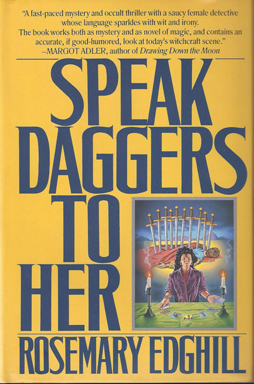 If shopkeepers are often primary characters in The Magic Shop, so the economic background emerges as or more clearly than in Magic For Sale. I mean that characters are concerned with work and with turning a profit. Magic doesn’t (always) allow them to be unconcerned with supporting themselves. I think there’s less of a concern with total transformation, then, and more of a concern with doing what one does but doing it better — with realising dreams rather than opening up new worlds, perhaps.
If shopkeepers are often primary characters in The Magic Shop, so the economic background emerges as or more clearly than in Magic For Sale. I mean that characters are concerned with work and with turning a profit. Magic doesn’t (always) allow them to be unconcerned with supporting themselves. I think there’s less of a concern with total transformation, then, and more of a concern with doing what one does but doing it better — with realising dreams rather than opening up new worlds, perhaps.
This all comes together in a completely new conception of the magic shop: the store as a kind of centre for a community. I think this fits with the way stores have tended to develop in the internet age, as brick-and-mortar retailers in a number of fields have to find what they can do that internet sites can’t. Stores become the nuclei of communities, then, and we see that in The Magic Shop. It’s very different from the more conflict-oriented model of store-customer interaction of Magic For Sale. As I said, nobody’s trying to swindle anyone, and there are no hidden catches or fine print. Occult shops in these stories are consistently presented as the heart of esoteric communities, and the older-style magic shops either seem to be struggling to stay open (as in West’s) or may be in the process of transformation to more welcoming places (as in Sizemore’s and Sinor’s).
With all these similarities and differences noted, I’d like to observe a sub-theme that comes out when the thirty stories of these two anthologies are read together. There’s a structural ploy that’s used, not always, not in most cases, but more often than you might expect: the story-told-inside-a-story. Club stories, if you like, in which the actual story takes the form of a tale told by one character to others, although here I also want to include stories told from a point of view in which the ‘omniscient’ narrator is positioned as somebody telling a story to readers — somebody possessing only a part of the story, somebody knowingly pulling your leg.
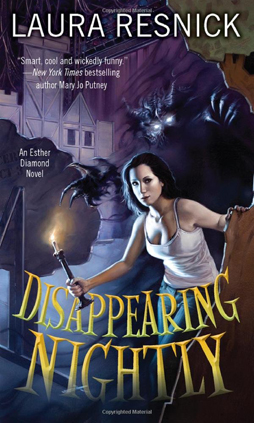 In Magic For Sale, Brosnan’s, Bester’s, and Wells’ stories all use the kind of approach I’m talking about, and you could argue that the same is true of Davidson’s and the Pratt-De Camp collaboration. Here you see the same sort of thing in Braunbeck’s and Rosemary Edghill’s, while you could argue that the first-person narration of West’s and McCay’s act as a kind of frame in which the narrator consciously tells the story to the reader (that is: a first-person perspective can be used for any number of reasons, but here it seems to structurally establish the story as a thing told). It’s interesting that this structure also links the magic-shop story to the bar tale — De Camp and Pratt’s story takes place in a bar, so does Bester’s, so does Braunbeck’s.
In Magic For Sale, Brosnan’s, Bester’s, and Wells’ stories all use the kind of approach I’m talking about, and you could argue that the same is true of Davidson’s and the Pratt-De Camp collaboration. Here you see the same sort of thing in Braunbeck’s and Rosemary Edghill’s, while you could argue that the first-person narration of West’s and McCay’s act as a kind of frame in which the narrator consciously tells the story to the reader (that is: a first-person perspective can be used for any number of reasons, but here it seems to structurally establish the story as a thing told). It’s interesting that this structure also links the magic-shop story to the bar tale — De Camp and Pratt’s story takes place in a bar, so does Bester’s, so does Braunbeck’s.
What does it mean? Is it a distancing tactic? Is it a way to call the strangeness of magic into deeper question? Personally I think I’m talking about stories that position themselves as provisional narratives: here’s a story. Believe it or not. Accept it or not. They’re stories that can be true, or might not; stories that tell a story about magic while still leaving the existence of magic up in the air. Except really they don’t. Really you’re reading a story. And the story is about magic. It doesn’t work otherwise. So maybe this is just another tactic for bringing magic into a real-world setting, and one that’s particularly useful when someone’s writing about magic shops.
As I said last time, I don’t want to make too many grand statements. All these things I think I’m seeing may well only be a function of a small sample size, and of the specific stories I’m looking at, to say nothing of my own apophenia. But it’s interesting that a lot of what changed from book to book is exactly what you’d expect to change over the course of a few decades. These are different books, with different strengths and weaknesses, both with stand-out stories and flops. Taken together, they make for a fascinating dialogue, in which the weaknesses gain in interest while the strengths shine more clearly. What, I wonder, will another anthology of magic shop stories look like in another ten years?
Matthew David Surridge is the author of “The Word of Azrael,” from Black Gate 14. His ongoing web serial is The Fell Gard Codices. You can find him on Facebook, or follow his Twitter account, Fell_Gard.
When I was working on the Trafficking in Magic, Magicking in Traffic anthology, I didn’t realize it was in such a specific tradition. It came out in 2014, so it might be an interesting case study.
Your observation about the shop as a center of community. In the Neo-Pagan movement, local esoteric shops were probably the most important gathering places for people of different branches of Paganism, and the most important places where people new to Paganism came to find a way into a congregation. The internet eventually displaced the cork message-boards of local shops, but it took a surprisingly long time.
I guess one issue is that such stories – in their original format – became overly familiar. Guy stumbles across magic shop. Guy buys magical object that will solve all his problems, but using said object has unintended consequences. And that context means the shop has to be a receptacle for the unknown, a place where the familiar and the uncanny overlap, with the shop-keeper as a threshold guardian. In which case, the second anthology could have been an attempt to breathe new life into an overly-familiar trope??
Ironic that Wells’s story ‘The Magic Shop’ didn’t feature in the first anthology, given its title – maybe for similar reasons (ie, everybody had read it).
Sarah: The Trafficking in Magic anthology sounds fascinating! I had no idea it existed. What you’re saying about esoteric shops is pretty much what I saw at a local store around here — it went out of its way to build a resource centre, hold workshops, and, as you said, had a large cork message-board.
Aonghus: Good point about the familiarity of the stories. A quick web search shows me that the idea’s familiar enough that Terry Pratchett’s lampooned it. It very well may be that the second anthology did consciously try to do something new, reacting against the old tradition. (Though the Wells story actually was in the first book.)